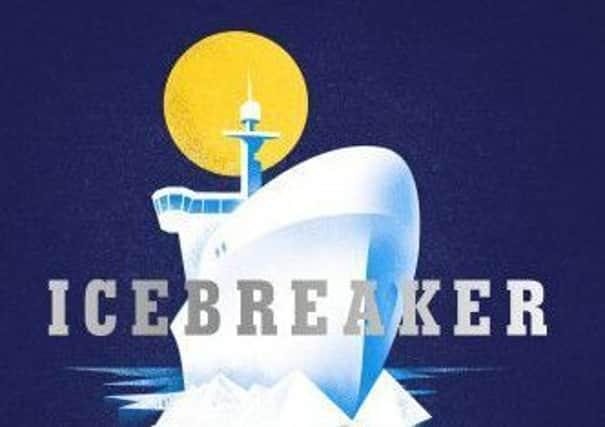Book review: Icebreaker - A Voyage Far North, by Horatio Clare


It might not sound like the ideal raw material for a compelling piece of reportage, spending days on end aboard a boat whose only task is to plough back and forth across an almost completely features seascape, clearing channels through pack ice in the Gulf of Bothnia so that other boats can get travel safely between Finland and Sweden, and there are certainly points during Icebreaker where you get the feeling that the author – stuck on a boat going nowhere, in the middle of nowhere, with nothing much happening – is struggling to get his teeth into his subject (“I am looking for someone, anyone, who is doing something interesting,” he writes at one point). In the end, though, in spite of a thoroughly uneventful voyage and an initial reticence from certain members of the crew to give him much in the way of material, he manages to cook up a surprisingly readable yarn – one which offers some telling and often amusing insights into the Finnish way of life while at the same time explaining how the work of an icebreaker crew fits into the increasingly complex geopolitical picture in the far north.
To fully understand that picture, however, a bit of history is required first, and in the early chapters Clare touches on some of the major events in Finland’s 100-year life as a nation: Mannerheim’s declaration of independence from Russia in 1917 and the subsequent civil war; the dramatic Winter War of 1939-1940, in which the Finns amazed the world by holding the might of the Red Army at bay; Finland’s “tactical neutrality” during the Cold War; its transformation into one of Europe’s most egalitarian and forward-looking democracies (it was the first European country to give women the vote); and its emergence as a tech giant when Nokia became a global leader in mobile phone technology – at least for a while.
Advertisement
Hide AdIt’s the large, well-armed neighbour directly to the east, however, that continues to dominate Finnish politics, and as Clare writes “for observers of geopolitics icebreakers are an emblem of not entirely soft power.” Otso, the icebreaker Clare is travelling aboard, isn’t merely a means of keeping trade routes open in the Gulf of Bothnia during the winter months – it is also a strategic asset thanks to a machine on board called the J-Map. Once the boat moves out of range of Finnish coastal radar, explains one crew member, “the navy can see what we see.”
“So we become a listening post?” Clare asks.
“More like watching, another radar.”
In one sense, then, the Gulf of Bothnia is a place where nothing happens; in another sense, it is a key faultline between two enormous geopolitical plates.
Clare is careful not to let politics overwhelm everything else in the book however, as they could very easily have done. He perseveres with trying to make conversation with even the most taciturn crew members, and is eventually rewarded with a few candid exchanges; he writes with perceptiveness and precision about the ways in which global warming is already starting to change the geography of the region; and he even manages to find poetry in the ice – his concluding flourish is so powerfully evocative it’s worth quoting it in full. Recalling the vertiginous experience of leaving the ship and walking out onto the ice on a sunny day, he writes of how “light poured down and up at once.”
“While standing on a mountain top grants you the vista of a scoop of space, from valley bottom to cloud level and beyond, standing on the sea under clear air erases depth and height. The sky begins in the snow under your boots. You are simultaneously huge and as tiny as a fleck.”
*Icebreaker: A Voyage Far North, by Horatio Clare, Chatto & Windus, 213pp, £14.99